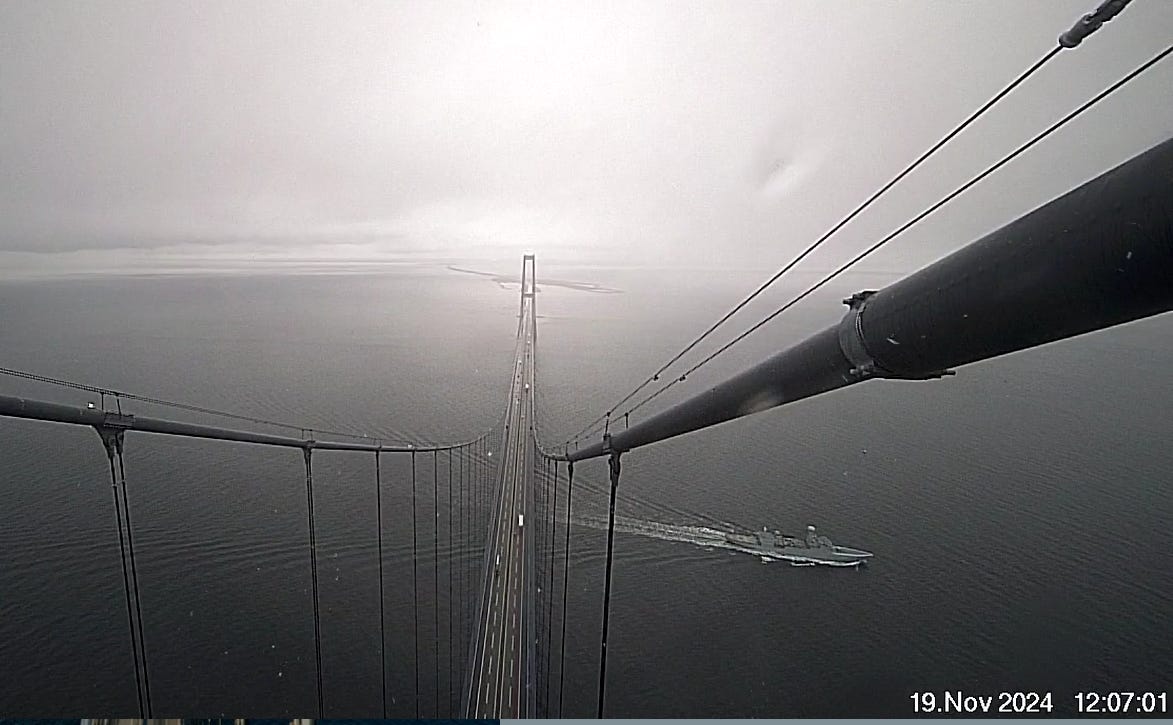Sabotage Against Cables in the Baltic Sea
For the second time this year, sea cables in the Baltic Sea have allegedly been damaged by a ship's anchor. The foreign ministers of Finland and Germany call it sabotage, but it is not confirmed.
Yesterday, Monday 18 November in the early hours, two data cables in the Baltic Sea were reported out of function. It seems that cables between Finland and Germany, respectively Sweden and Lithuania, have been damaged. Data traffic, including internet connection has been lost.
It is unlikely that two data cables were destroyed by accident, says Germany's defense minister.
Joint statement by the Foreign Ministers of Finland and Germany on the severed undersea cable in the Baltic Sea.
We are deeply concerned about the severed undersea cable connecting Finland and Germany in the Baltic Sea. The fact that such an incident immediately raises suspicions of intentional damage speaks volumes about the volatility of our times. A thorough investigation is underway. Our European security is not only under threat from Russia‘s war of aggression against Ukraine, but also from hybrid warfare by malicious actors. Safeguarding our shared critical infrastructure is vital to our security and the resilience of our societies.
The C-Lion1 cable, which was commissioned in spring 2016, is the only direct data connection between Finland and Central Europe. It runs 1,173 kilometers from Helsinki to Rostock, partly along the route of the Nord Stream pipelines. Finnish media emphasize the importance of the cable for the country's internet connections, although Finland is also connected to Europe via other routes. So far, no impact has been felt by Finnish internet users, because there are plenty alternative and back-up routes available for data traffic.
On 7-8 October 2023, just over a year ago, the Balticconnector gas pipeline between Finland and Estonia was damaged, presumably by the anchor of a Chinese ship. Whether this was an accident or sabotage is still unclear. At that time, a data cable between the two EU states was also damaged.
An investigation by the Finnish authorities named the main suspect a Chinese container ship, the Newnew Polar Bear. It is believed to have dragged its anchor across the seabed, cutting through the cables and gas lines. The anchor — which weighs 6 metric tons — was retrieved not too far from the site of the damage. The Finnish authorities have been in contact with Chinese authorities but apparently without any outcome, so far. Newnew Polar Bear came from St. Petersburg in Russia.
The Finnish newspaper Hufvudstadsbladet (HBL) reports that the Danish Navy vessels HDMS Hvidbjørnen and DNK Navy Patrol P525 are now escorting the Chinese bulk carrier Yi Peng 3 within Danish territorial waters. On the vessel tracker, it is currently (12 noon Tuesday) positioned just under the Great Belt Bridge, Northbound.
Last day’s track of Chinese bulk carrier Yi Peng 3 - Marinetraffic.com
From the unofficial track recording, it is noticeable that the Chinese vessel seems to have halted or slowed down significantly in the early hours of Monday, at a position south to south-east of the Swedish island of Gotland. It is not confirmed, but if this particular vessel would have something to do with the malfunction of the two cables, they happen to cross each other in this area and the timing is also corresponding to observations.
State broadcaster YLE commented on the case and further perspectives:
The state-owned company Cinia, which builds fiber optic networks and provides telecommunications services, organized a press conference for Suomenkabel on Monday. According to the company, outages like this do not occur without external influence.
If the perpetrator is Russia, it's just a test
If, for example, Russia was behind the broken submarine cable, it would only be a matter of testing and not an attempt to paralyze, says director Jukka Savolainen from the European Hybrid Expertise Center. YLE
- If this was done by Russia, then it should perhaps be interpreted as a warning that we can do something bigger, and also as a test to see if we can do something about it, Savolainen stated on Radio Suomen Päivä.
According to Savolainen, larger, socially crippling acts would probably occur at a critical moment in terms of political decision-making.
- Those big paralysis have yet to be seen, but they will then be connected to some kind of political momentum, when NATO or the EU tries to make some big decision.
Danish warship F360 Hvidbjørnen passing under the Great Belt Bridge in escort of the Chinese bulk carrier. Screen dump from the bridge webcam.





